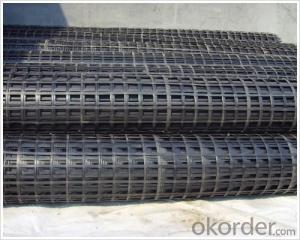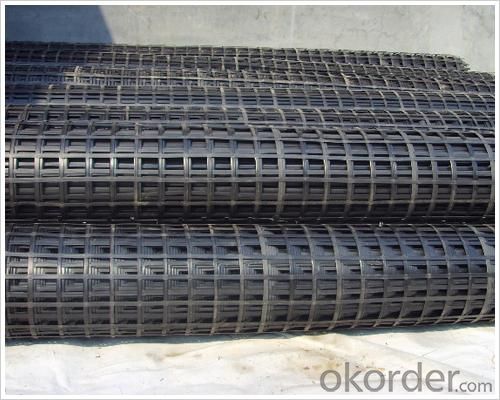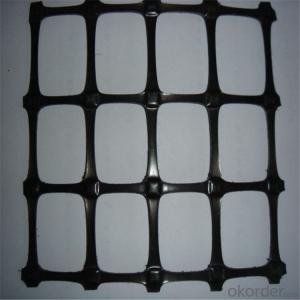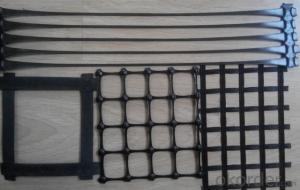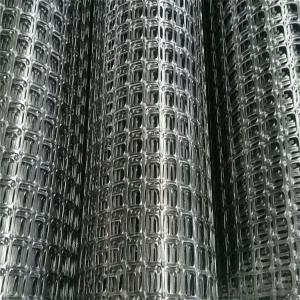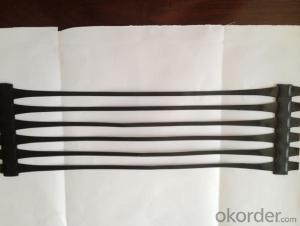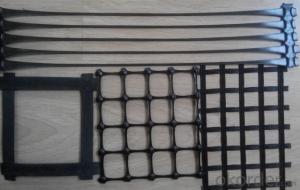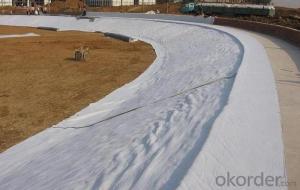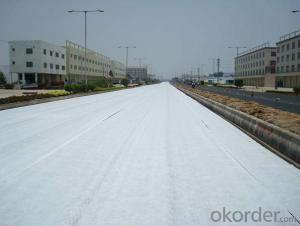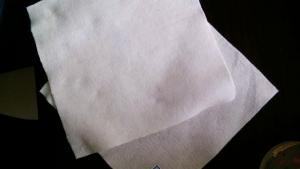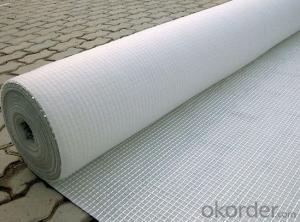PP Biaxial Geogrid Tensile Structure with Geotextile Layer
- Loading Port:
- China Main Port
- Payment Terms:
- TT OR LC
- Min Order Qty:
- -
- Supply Capability:
- -
OKorder Service Pledge
OKorder Financial Service
You Might Also Like
Packaging & Delivery
| Packaging Detail: | Standard export packing or according to customer requirements |
| Delivery Detail: | Within 10-15 days |
Specifications
different shape biaxial geogrid
Tensile strength: 15~40KN/M
Elongation ratio: vertical 16%,horiz-ontal 13%
Width: 1-6m
tensile structure used pp biaxial geogrid
Description
Biaxial geogrid is made of polypropylene through extrusion, forming and punching
before longitudinal and lateral stretching.
Application
1. Increase the bearing capacity of foundation, prolong the service life of road foundation.
2. Prevent the road (to) surface subsidence or cracking, keep the floor clean and beautiful.
3. The construction is convenient, time-saving, labor-saving, shorten the construction period,
reduce the cost of repair.
4. Prevent culvert crack.
5. Enhance the soil, preventing soil erosion.
6. Reduce the thickness of cushion, save the cost.
7. The stability of slope greening environment support grass mat.
8. Can replace the metal mesh, used for coal mine false roof net.
Specification
Speification | TGSG1515 | TGSG2020 | TGSG2525 | TGSG3030 | TGSG3535 | TGSG4040 | TGSG4545 | TGSG5050 |
width(m) | 2.5 or3 or 5 or 6 | |||||||
Longitudinal/Transverse Tensile Strength ≥(KN/m) | 15 | 20 | 25 | 30 | 35 | 40 | 45 | 50 |
Longitudinal Elongation≤(%) | 15 | |||||||
Transverse Elongation≤(%) | 13 | |||||||
Transverse Strength at 2% Strain ≥(KN/m) | 5 | 7 | 9 | 10.5 | 12 | 14 | 16 | 17.5 |
Longitudinal Strength at 5% Strain (KN/m) | 7 | 14 | 17 | 21 | 24 | 28 | 32 | 35 |
- Q: How do geotextiles help with sediment control?
- Geotextiles help with sediment control by acting as a barrier that prevents sediment from being washed away or eroded. They stabilize the soil, reduce erosion, and allow water to pass through while trapping sediment particles, thus preventing them from contaminating water bodies.
- Q: How do geotextiles affect plant growth?
- Geotextiles can positively impact plant growth by providing a stable environment for roots, preventing soil erosion, and promoting moisture retention. Additionally, they control weed growth, regulate soil temperatures, and enhance nutrient availability, ultimately leading to healthier and more productive plants.
- Q: How do geotextiles help in preventing soil erosion in construction sites?
- Geotextiles help in preventing soil erosion in construction sites by acting as a barrier between the soil and the forces that cause erosion, such as wind and water. These synthetic fabrics are placed on the soil surface or embedded within it to stabilize the soil and enhance its strength. Geotextiles also improve filtration and drainage, reducing water flow velocity and preventing the loss of fine soil particles. By providing reinforcement and protection, geotextiles effectively mitigate soil erosion and maintain the stability of construction sites.
- Q: Can geotextiles be used in the protection of pipelines?
- Yes, geotextiles can be used in the protection of pipelines. Geotextiles are commonly employed as a protective layer to prevent damage to pipelines caused by external factors such as soil erosion, chemical exposure, and mechanical impacts. They act as a barrier between the pipeline and the surrounding soil, providing cushioning and reducing the risk of abrasion or puncture. Geotextiles also help to distribute the loads and stresses evenly, enhancing the overall stability and longevity of the pipeline system.
- Q: How do geotextiles help with soil separation in subgrade improvement projects?
- Geotextiles are used in subgrade improvement projects to separate different soil layers, preventing them from mixing. They act as a barrier, allowing water to pass through while preventing the migration of fine particles. This helps to maintain the stability and strength of the subgrade, reducing the risk of settlement and soil erosion.
- Q: What are the different geotextile testing parameters?
- Some different geotextile testing parameters include tensile strength, puncture resistance, burst strength, permittivity, apparent opening size, and UV resistance.
- Q: Can geotextiles be used in agricultural drainage systems?
- Yes, geotextiles can be used in agricultural drainage systems. They are commonly used as a filter fabric to prevent soil particles from clogging drainage pipes while allowing water to pass through. Geotextiles help improve the efficiency and longevity of agricultural drainage systems by preventing soil erosion and maintaining the proper flow of water.
- Q: You produce 700 grams of high-strength polypropylene geotextile it?
- 700 grams of high-strength polypropylene geotextile is designed for high-speed rail sliding layer of high-strength wear-resistant geotextile, our products in the West high-speed rail passenger line, OKorder and Hangzhou and other high-speed rail lines have applications.
- Q: Unit of the quality of 400 geotextile piercing strong is generally how much? Hurry more
- First, geotextile polyester staple fiber geotextile (PET) and polyester filament geotextile two. Two kinds of geotextile anti-puncture strong (should be CBR burst strong) different. Polyester staple geotextile in accordance with the national standard GB / T-2008 standard implementation, 400g GB polyester staple geotextile CBR burst strength ≥ 2.1KN. Polyester filament geotextile in accordance with the national standard GB / T-2008 standard implementation, 400g GB polyester filament geotextile CBR burst strength ≥ 39KN. 400g GB polyester staple geotextile longitudinal and horizontal tear strength ≥ 0.33KN, 400g GB polyester filament geotextile longitudinal and horizontal tear strength ≥ 0.56KN.
- Q: 300g geotextile GB thickness is how much
- There are a variety of geotextiles. If it is non-woven, then upstairs said correct. If it is woven type, that is not right, it should be about 1mm.
Send your message to us
PP Biaxial Geogrid Tensile Structure with Geotextile Layer
- Loading Port:
- China Main Port
- Payment Terms:
- TT OR LC
- Min Order Qty:
- -
- Supply Capability:
- -
OKorder Service Pledge
OKorder Financial Service
Similar products
Hot products
Hot Searches
Related keywords
